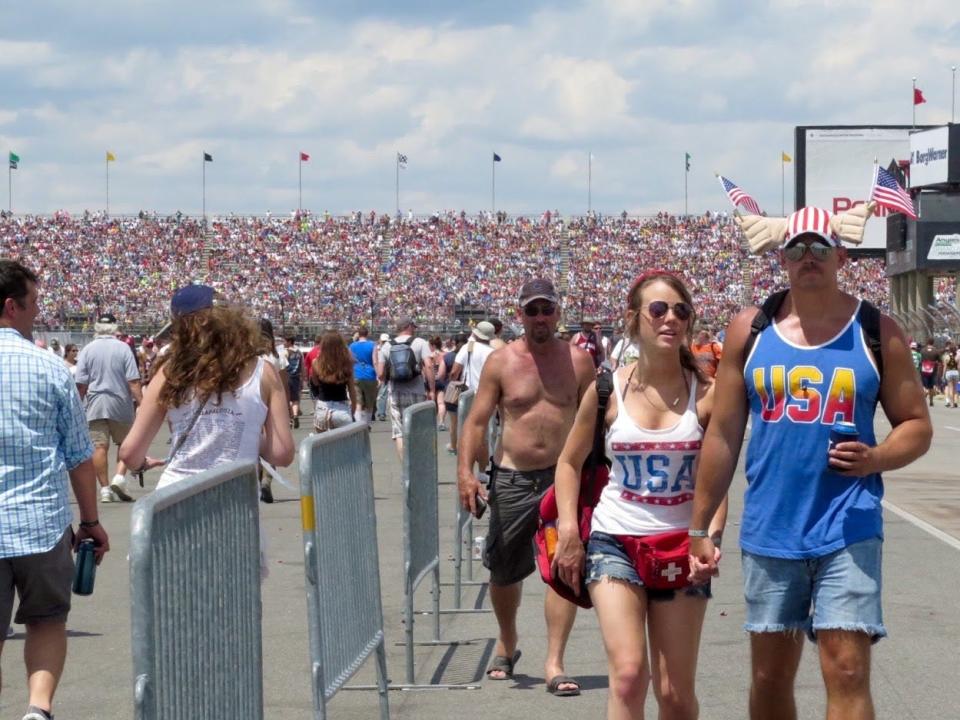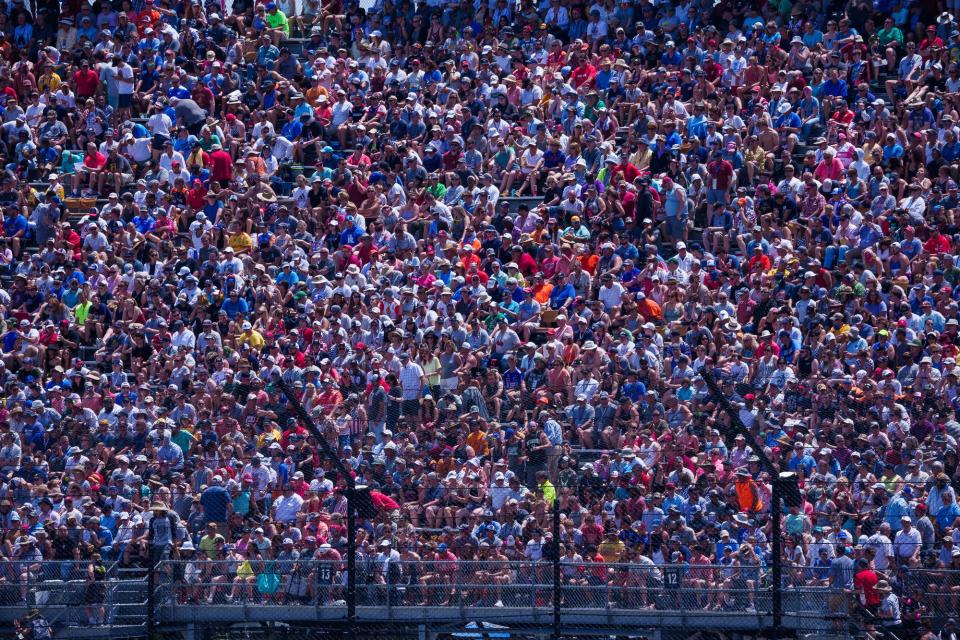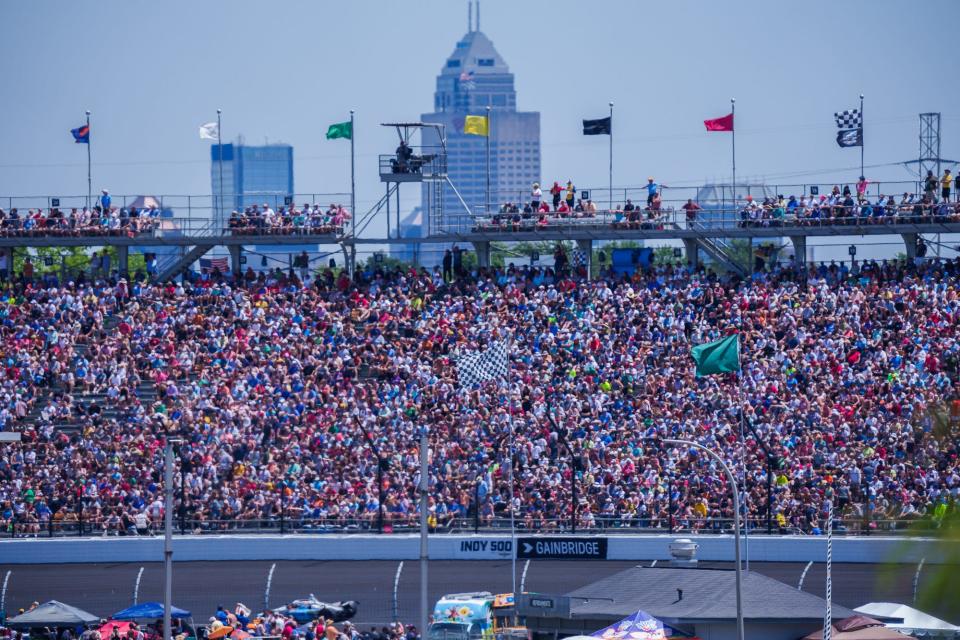Inside IMS's consistent growth in Indy 500 ticket sales following 100th running in 2016
In the years leading into the 2016 Indianapolis 500, Hulman & Co. executives were staring down a troubling trend. The race was losing customers year-over-year. In so many ways, the historic, riveting, pageantry-filled 100th running couldn’t have come at a better time. Indianapolis Motor Speedway officials had been forced to cut off general admission ticket sales the week of the race and lift the local blackout of the live broadcast that had existed for more than 60 years. Mark Miles, Doug Boles and company looked at that race as a springboard instead of a saving grace.
Boles, the president of IMS, would tell IndyStar in 2018 that the track hosted just 220,000 fans for the 2015 500 in what has to have been one of the lowest-attended races in modern history. As execs took a step back and surveyed the resounding success that was Memorial Day weekend in 2016, they set a not insignificant goal for their ticket office over the next 12 months: Hold onto at least 50% of the year-over-year growth in ticket sales from 2015-16 for the next year’s race.

In other words: Attendance jumped from 220,000 to 350,000 fans; IMS wanted to hit at least 285,000 for 2017.’
They did, and it’s with that focus on year-over-year growth in the seven years since the 100th running that has Boles again talking about the possibility of a sellout not too far down to the road, fueled not by history and exclusivity but from embracing its monikers of ‘the largest single-day sporting event in the world’ and ‘the greatest spectacle in racing.’
This year, IMS could very well host 330,000 fans across its 300-plus acres May 28.
“It’s a thing I worry about every day, but from our 500-hour renewal period, we’ve been up (year-over-year) every single day. I literally wake up every day worried that the sales are going to stop, but we’re about a tick over 1% up (on 2022 sales), which doesn’t seem like a lot, but when you’re talking about more than 300,000 people, that’s 3,000-4,000 more people to this year’s 500 versus last year,” Boles told IndyStar on Monday in an exclusive interview. “At that rate, we’re starting to get back into that sellout conversation, probably in the next couple years.”

From 220,000 fans to 325,000 in seven years
Here’s the path IMS has taken to get there:
>>In 2018, when asked about that year’s 500 attendance, Boles declined to go into specifics, but he did note that the track hosted roughly 220,000 three years prior. This week, Miles, the president and CEO of Penske Entertainment Corp, told IndyStar that IMS had seen year-over-year dips during the first three years of his tenure overseeing IMS and IndyCar (2013-15).
>>Leading up to the historic 100th running in 2016, IMS sold out of reserved tickets in the first week of May. After another quick run on general admission tickets in the first couple days of race week – nearing 75,000 total GA tickets sold in total – IMS closed its ticket windows for the first time ever. With roughly 350,000 tickets sold, it lifted the local blackout for the first time since the 1950s.
>>In 2017, Miles told the Sports Business Journal attendance for that year’s race was “right at 300,000.”
>>In that same 2018 conversation with Boles referenced above, the IMS president told IndyStar that attendance that year “was better than last year”, which would indicate a mark just above 300,000.
>>Boles told IndyStar on race day morning in 2019 that with walk-up traffic yet to be determined, IMS was going to be within 500 tickets (better or worse) of its 2018 attendance, leaving that last year before the onset of the COVID-19 pandemic roughly flat, year-over-year.
>>Due to the COVID-19 pandemic, IMS both moved the 500 to August and then held it without any fans in attendance in 2020. In 2021, the track capped attendance at 135,000 with an official crowd of 134,670.
>>In 2022, Boles said in mid-May that IMS had already sold 90% of its grandstand tickets (of which there are roughly 232,000), and by race day, he said this week that only 12,000 remained unsold by the green flag. Including general admission, those in the Snake Pit and suites, IMS announced post-race it had hosted a crowd of more than 325,000 fans on race day alone.
“Our worry this year was, ‘Okay, 2022 was a great number, but it was because everybody wanted to come back after the pandemic’,” Boles said. “’And now they have, so it’s going to drop.’
“Fortunately, it hasn’t.”
The blackout is back: IMS will block local live viewership of Indy 500 on Peacock
2023 pace car: IMS celebrates Chevy Corvette history with first hardtop convertible pace car
Said Miles: “I think we’re practically locked into selling a couple thousand more (reserved seats), and I hope it’s even more than that. And that’s just units. When you’re talking revenue, it’ll be a couple percentages higher than the units (increase) because we’ve raised some ticket prices, and then that flows through everything.
“Really, there’s been a halo effect from the 500 across everything in May, whether it’s the Grand Prix or practice days or qualifying. Weather-permitting, ticket sales for everything to-date are stronger.”

In May, IMS sells more tickets each day than the last
Luckily, with how much he stresses over the 500’s ticket sales progress each year around this time, Boles’ team at the ticket office provides as many daily updates as he could need. Emails with updated sales numbers roll into his inbox every morning by the time he walks into the IMS administration office, followed by another one at noon and a third by the time he’s packing up to take whatever work he has left home with him.
“And Ryan Hollander (IMS’s manager of direct marketing and analytics), who never sleeps, sends me an update at midnight, too,” Boles said. “So if I’m awake then, I’ll see it, and if I get up at 4:30 or 5 a.m. and haven’t yet, I’ll see it then first thing when I wake up.”
Counter to what one might expect, Boles explained, IMS will actually continue to sell more and more tickets each day than the day prior by this time in the month, up until race day morning – and it’s never because there’s a discount available when there’s only a select few tickets available and a rush to try and get rid of those last few to be able to brag about a sellout.
“The cheapest ticket you’re ever going to get is in those first 500 hours (of the renewal period after the end of the race). We’re never going to discount it after that, because when you do, those customers that a year out say, ‘I want my seat back and I’m going to pay you’, if they realize they can wait and get a better deal, then they’re going to wait,” Boles said. “Our prices increase as we go forward, and what you’ll pay today is more than it was at the end of April, and race day will be more than it is now.
“We want to make sure we take care of our people who renew.”
This article originally appeared on Indianapolis Star: Indy 500: Doug Boles says IMS could sellout 'in a couple years'
